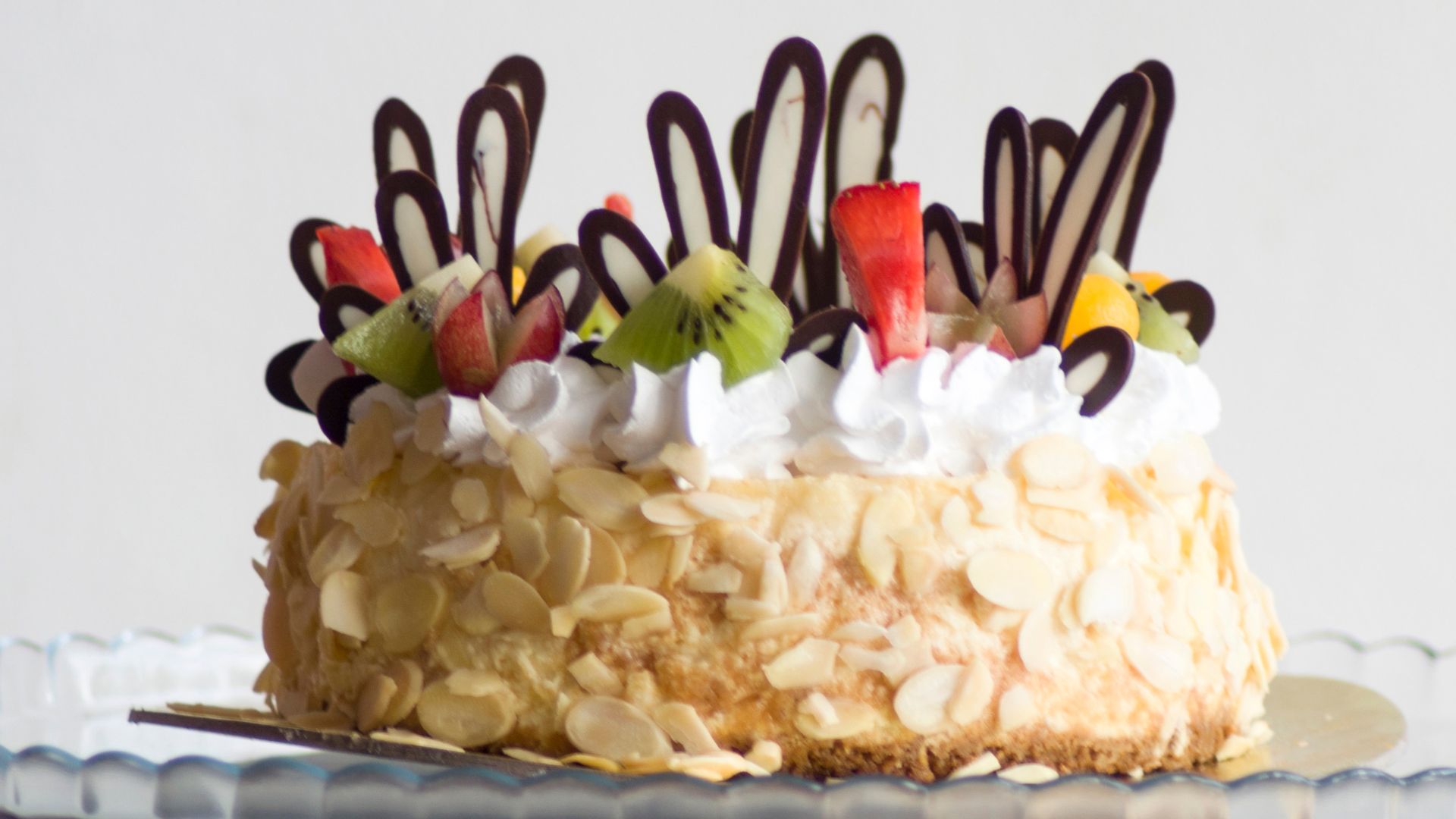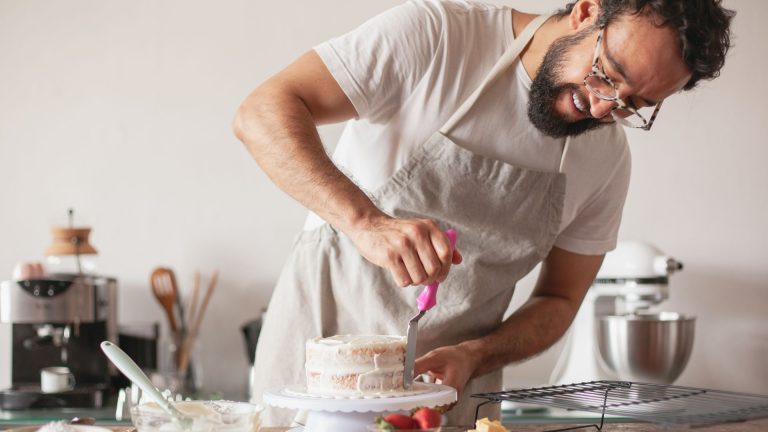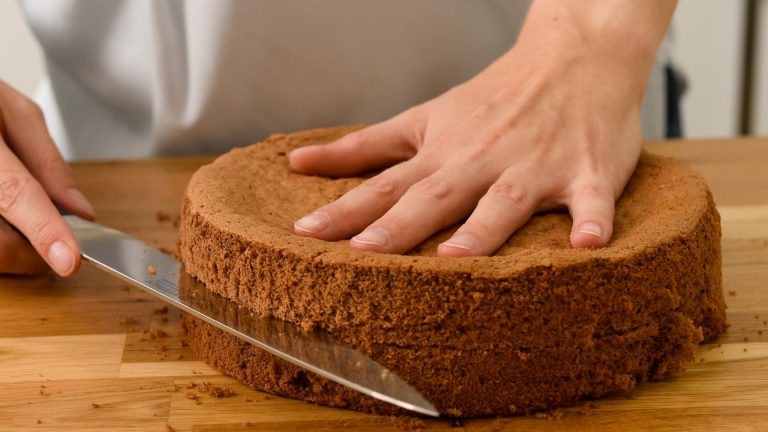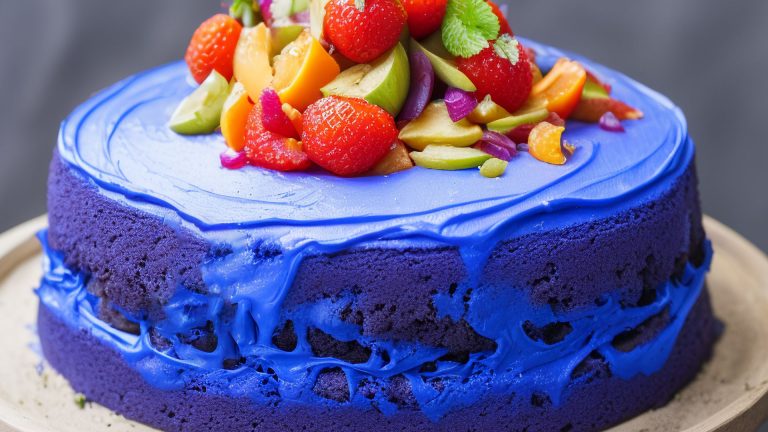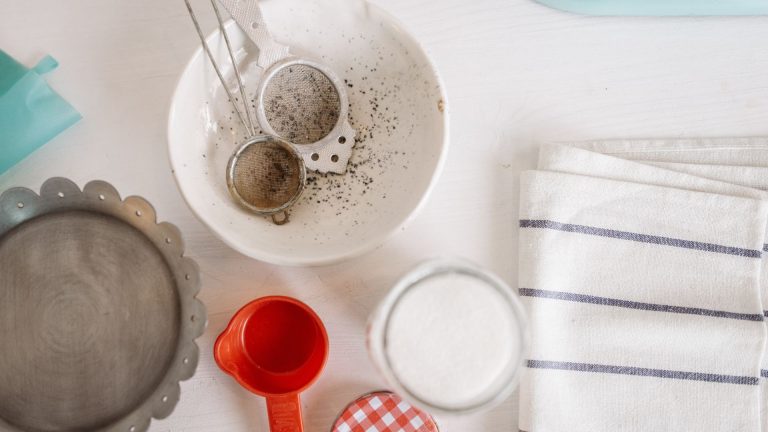MRB: Marbling role in cake making Explained
In this topic, I’m going to talk about MRB – Marbling, specifically focusing on its role in cake making. From my own personal experience, I’ve found marbling to be an essential technique that not only adds visual appeal but also enhances the flavor and texture of cakes. Whether you’re a home baker or a professional chef, understanding marbling can elevate your baking skills to new heights.
What is MRB – Marbling?
Marbling refers to the process of incorporating different colors or flavors into a cake batter to create a swirled, veined effect. This technique can be used with various types of batters, including chocolate, vanilla, and fruit-flavored. The result is a visually striking pattern that can also provide a delightful mix of flavors in each bite.
In simpler terms, marbling involves mixing two or more batters in a way that they swirl together but don’t completely blend. This creates a beautiful and unique pattern throughout the cake. Think of it as painting with cake batter where each swirl adds a new dimension to the final product. == >> Check out the right cake Marbling tools and ingredients that you need here
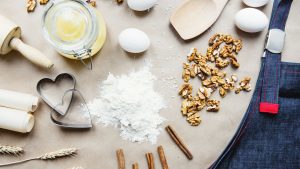
The Role of Marbling in Cake Making
Enhancing Visual Appeal
One of the most obvious roles of marbling is its ability to make cakes look stunning. The swirled patterns create a marble-like effect that can turn an ordinary cake into a centerpiece. Whether you’re baking for a special occasion or just for fun, a marbled cake is sure to catch the eye and impress your guests.
Adding Flavor Complexity
Marbling isn’t just about aesthetics; it also plays a role in flavor. When you mix different batters, such as chocolate and vanilla, the result is a cake with layered flavors. Each slice will offer a delightful combination of tastes, making the cake more interesting and enjoyable. It’s like having a variety of flavors in every bite without needing multiple cakes.== >> Check out the right cake Marbling tools and ingredients that you need here
Textural Variety
Different batters can have varying textures, and marbling allows these textures to complement each other. For instance, a rich, dense chocolate batter can be swirled with a lighter vanilla batter, creating a cake with varied textures. This adds to the overall eating experience, providing a pleasing contrast in each slice.
How to Marble a Cake
Prepare Your Batters
Start by preparing your batters. Typically, you’ll have a base batter (like vanilla) and an additional batter for marbling (like chocolate or fruit-flavored). Make sure both batters have similar consistencies to ensure a smooth marbling process.== >> Check out the right cake Marbling tools and ingredients that you need here
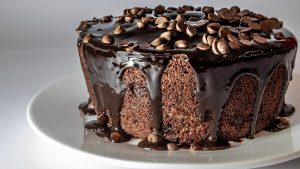
Layer and Swirl
Spoon dollops of each batter into your cake pan in a random pattern. Use a knife or a skewer to gently swirl the batters together. Be careful not to over-mix, as you want distinct swirls rather than a uniform blend.== >> Check out the right cake Marbling tools and ingredients that you need here
Bake and Enjoy
Bake your cake as directed in the recipe. Once cooled, you’ll have a beautifully marbled cake with a delightful mix of flavors and textures.
Tips for Perfect Marbling
- Consistency is Key: Ensure that the batters are of similar thickness. If one batter is too thin or too thick, it may affect the marbling effect.
- Don’t Over-Swirl: Gentle swirling is crucial. Too much mixing can result in a muddled appearance and a less distinct marbling pattern.
- Experiment with Flavors: Try different combinations of batters to find your favorite flavor profiles. You can mix chocolate and vanilla, or even experiment with fruit-flavored batters.
Marbling is more than just a visual trick; it’s a way to enhance the flavor and texture of your cakes. By mastering this technique, you can turn ordinary cakes into works of art that are as delicious as they are beautiful.
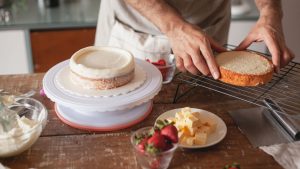
Marbling flavor combinations?
Marbling Flavor Combinations: A Guide to Delicious Swirls
Marbling isn’t just about creating beautiful patterns; it’s also an opportunity to play with different flavor combinations in your cakes. The art of marbling allows you to blend various flavors seamlessly, resulting in a cake that’s both visually appealing and deliciously complex. Here’s a guide to some delectable marbling flavor combinations to try:
1. Chocolate and Vanilla
Why It Works: The classic pairing of chocolate and vanilla is timeless. The rich, deep flavor of chocolate contrasts beautifully with the light, creamy vanilla.
How to Do It: Alternate spoonfuls of chocolate and vanilla batters in your cake pan. Swirl gently to create a marble effect that showcases both flavors.
2. Lemon and Blueberry
Why It Works: The tartness of lemon combined with the sweet, juicy burst of blueberries offers a refreshing and vibrant flavor profile.
How to Do It: Mix lemon zest or lemon juice into one batter and blueberry puree or jam into another. Spoon them into the pan in alternating layers and swirl lightly.
3. Pumpkin and Spice
Why It Works: The earthy sweetness of pumpkin pairs wonderfully with warm spices like cinnamon, nutmeg, and cloves. This combo is perfect for autumn.
How to Do It: Blend pumpkin puree and pumpkin pie spices into one batter. Use a second batter flavored with just the spices for a more intense flavor contrast.== >> Check out the right cake Marbling tools and ingredients that you need here
4. Chocolate and Peppermint
Why It Works: Chocolate and peppermint are a match made in dessert heaven. The cool, refreshing peppermint adds a nice contrast to the rich chocolate.
How to Do It: Add peppermint extract to one batch of batter and mix with cocoa powder in another. Swirl them together for a festive, minty treat.
5. Strawberry and Vanilla
Why It Works: The sweet, fruity flavor of strawberries complements the classic taste of vanilla. This combination is light, sweet, and perfect for summer.
How to Do It: Incorporate strawberry puree into one batter and vanilla extract into another. Layer them in the pan and swirl to blend the flavors.
6. Caramel and Apple
Why It Works: The sweet, buttery notes of caramel paired with the crisp, tart flavor of apples create a cozy, comforting cake.
How to Do It: Mix apple cider or finely chopped apples into one batter, and swirl in caramel sauce or caramel-flavored batter.
7. Almond and Chocolate
Why It Works: Almonds bring a nutty richness that complements the deep flavor of chocolate. This combination is sophisticated and satisfying.
How to Do It: Add almond extract to one batter and cocoa powder to another. Swirl them together for a delightful mix of flavors.
8. Coconut and Lime
Why It Works: The tropical flavor of coconut paired with the zingy brightness of lime creates a refreshing, exotic cake.
How to Do It: Stir shredded coconut and a splash of lime juice into separate batters. Layer and swirl them together for a tropical twist.== >> Check out the right cake Marbling tools and ingredients that you need here
Tips for Perfect Marbling
- Balance Your Flavors: Ensure that the flavors you choose complement each other well. Overly strong or conflicting flavors might not blend as harmoniously.
- Consistent Texture: The batters should have similar consistencies to ensure a smooth marbling process. If one is too thick or too runny, it might affect the pattern.
- Experiment: Don’t be afraid to experiment with unique flavor combinations. Sometimes, unconventional pairings can result in surprisingly delightful cakes.
Comparison Table of Marbling Flavor Combinations
Here’s a quick comparison table to help you understand the key notes and considerations for each marbling flavor combination. This will guide you in selecting the perfect pairings based on flavor profiles and desired outcomes.
| Flavor Combination | Key Notes | Considerations |
|---|---|---|
| Chocolate and Vanilla | – Classic, timeless pairing.
– Rich chocolate vs. light vanilla. |
– Ensure batters are similar in thickness.
– Easy to achieve with a broad appeal. |
| Lemon and Blueberry | – Refreshing and vibrant.
– Tart lemon contrasts with sweet blueberry. |
– Use fresh or high-quality blueberry puree.
– Balance the tartness of lemon. |
| Pumpkin and Spice | – Cozy autumn flavors.
– Earthy pumpkin with warm spices. |
– Pumpkin puree should be smooth.
– Adjust spice levels to taste. |
| Chocolate and Peppermint | – Festive and refreshing.
– Cool peppermint enhances rich chocolate. |
– Use peppermint extract sparingly to avoid overpowering.
– Great for holiday baking. |
| Strawberry and Vanilla | – Sweet and light.
– Fruity strawberries with creamy vanilla. |
– Use fresh strawberries or high-quality puree.<br>- Avoid over-mixing for distinct swirls. |
| Caramel and Apple | – Sweet and comforting.
– Buttery caramel with tart apples. |
– Incorporate finely chopped apples or apple cider.
– Caramel should be smooth and well-blended. |
| Almond and Chocolate | – Nutty and rich.
– Almonds complement deep chocolate flavor. |
– Use almond extract carefully.
– Consider using almond meal for added texture. |
| Coconut and Lime | – Tropical and refreshing.
– Sweet coconut paired with zesty lime. |
– Shredded coconut should be fine.
– Adjust lime juice to prevent overpowering the coconut. |
Key Notes and Considerations for Marbling Flavor Combinations
Key Notes
- Flavor Balance: Ensure that the flavors you combine complement each other. A well-balanced flavor profile enhances both the taste and the overall enjoyment of the cake.
- Texture Consistency: Batters with similar consistencies work best for marbling. Significant differences in thickness can affect the marbling effect and the final texture of the cake.
- Visual Appeal: Marbling creates unique and attractive patterns. The visual impact can be enhanced by choosing contrasting colors or flavors.
- Seasonal and Thematic Pairings: Certain combinations, like pumpkin and spice, work well for specific seasons or occasions. Tailoring your flavors to the event can enhance the overall experience.
Considerations
- Ingredient Quality: Use high-quality ingredients, such as fresh fruits or pure extracts, to achieve the best flavor and texture. This impacts the final taste and appearance of your cake.
- Mixing Technique: Be cautious with your mixing technique. Over-mixing can result in a less distinct marbling pattern, while under-mixing might not blend the flavors well.
- Adjusting Flavors: Start with small amounts of strong flavors (like peppermint or spices) and adjust to taste. It’s easier to add more than to fix an overpowering flavor.
- Baking Times and Temperatures: Different batters might have slightly different baking times or temperatures. Monitor your cake closely to ensure even baking.
== >> Check out the right cake Marbling tools and ingredients that you need here
FAQs on Marbling in Cake Making
1. What is marbling in cake making?
Marbling in cake making is the technique of swirling two or more different batters together to create a visually appealing, swirled pattern in the finished cake. This method not only enhances the cake’s appearance but can also provide a blend of flavors and textures.
2. How do I achieve the best marbling effect?
To achieve the best marbling effect, use batters of similar consistency. Spoon alternating dollops of each batter into your cake pan and use a knife or skewer to gently swirl them together. Be careful not to over-mix, as this can result in a less distinct pattern.
3. Can I use any flavors for marbling?
Yes, you can use a wide range of flavors for marbling. Popular combinations include chocolate and vanilla, lemon and blueberry, and pumpkin and spice. Experiment with different pairings to find what works best for you.
4. Why is my marbling not showing up well in the finished cake?
If the marbling effect isn’t as prominent as you’d like, it could be due to over-mixing the batters or having batters with inconsistent thicknesses. Ensure the batters are of similar consistency and swirl gently to maintain distinct patterns.
5. How can I prevent the batters from mixing too much?
To prevent excessive mixing, use a light hand when swirling the batters. Make a few gentle strokes with a knife or skewer rather than stirring vigorously. The goal is to create a swirl pattern without fully blending the batters.
6. Can I marble batters with different baking times?
It’s best to use batters with similar baking times to ensure even cooking. If the batters have significantly different baking requirements, it could affect the overall texture and rise of the cake.
7. How do I adjust flavors if they are too strong or too weak?
Start with small amounts of strong flavors (like extracts or spices) and taste the batter. You can always add more if needed, but it’s harder to fix an overpowering flavor. Balance is key for the best results.
Final Words
Marbling is a fantastic way to elevate your baking by adding both visual and flavor complexity to your cakes. Whether you’re a novice baker or an experienced cake maker, mastering the art of marbling can significantly enhance the appeal and taste of your cakes. By experimenting with various flavor combinations and perfecting your swirling technique, you can create cakes that not only look stunning but also offer a delightful mix of flavors in every slice.
So, grab your mixing bowls, get creative with your flavors, and have fun swirling your way to cake perfection. Happy baking.

Hi!
I’m Mike, the creator of Forum Foodies. In my own personal experience, understanding ingredients is key to great cooking.
Forum Foodies offers guides on various ingredients, from staples to exotic finds. Join our community, share your experiences, and learn from fellow food lovers.
Have questions or suggestions? Email me at info@forumfoodies.com. Let’s embark on this delicious adventure together.
Happy cooking.
Mike/
Related Posts
- CRM: Creaming role in cake making Explained
In this topic, I'm going to talk about the creaming method and its role in…
- WHP: Whipping role in cake making Explained
In this topic, I'm going to talk about WHP - Whipping. From my own personal…
- SCO: Scooping role in cake making Explained
In the world of cake making, every little detail matters. One technique that might seem…
- MIX: Mixing role in cake making Explained
When it comes to cake making, mixing is an art form that can make or…
- SLC - Slicing role in cake making Explained
When it comes to baking, the art of slicing can make or break the final…
- BRU: Bruising Role in Cake Making Explained
When it comes to baking, it’s easy to get caught up in the complexities of…
- CUT - Cutting role in cake making Explained
In this topic, I’m going to talk about the often-overlooked but crucial aspect of cake…
- TMP: Tempering Role in Cake Making Explained
In this topic, I’m going to talk about tempering, a technique that’s often overlooked but…
- FOLD: Folding role in cake making Explained
In this blog, I’ll talk about the art of folding and its crucial role in…
- VLC: Vulcanizing role in cake making Explained
In this topic, I’m going to talk about VLC, or vulcanizing, and its role in…
- RSL: Resolving role in cake making Explained
In this topic, I’m going to talk about RSL—Resolving and its crucial role in cake…
- BSH: Basting role in cake making Explained
In this topic, I'll talk about BSH basting and its role in cake making, sharing…
- FZ: Freezing role in cake making Explained
In this topic, I’m going to talk about the role of freezing in cake making,…
- SFT: Softening role in cake making Explained
In this topic, I’m going to talk about softening and its crucial role in cake…
- PST: Pasturing role in cake making Explained
In this blog, I’m going to talk about the intriguing world of pasturing in cake…

